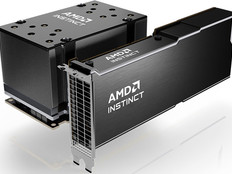Eyes on the Border
With thousands of miles of terrain to protect, the Homeland Security Department relies on technology to keep the nation’s borders secure, not just from undocumented immigrants but also from drug smugglers, human traffickers, gun runners and money launderers. Border Patrol agents face extreme conditions along U.S. land borders. The land between designated ports of entry is vast and often inhospitable — on the southern border, desert wasteland is the norm; to the north, rugged mountains and frigid winters complicate monitoring. Maintaining a human presence at all times is impossible, and physical barricades are not always effective.
The Customs and Border Protection’s Secure Border Initiative aims to remedy this situation by integrating both DHS human resources and physical structures along the border with advanced technology to detect and identify illegal border activity. For the SBInet project, DHS is deploying a series of pole-mounted digital day- and night-vision cameras, radar and unattended ground sensors. Linked via smart software, the components of this digital surveillance system will give agents a clear picture of what’s happening on the ground, says Jack Daly, division director of SBInet. That way, they can direct the appropriate response where it’s needed, when it’s needed, he says.
Building a Better Border
SBInet grew out of Project 28, a Boeing-led pilot project stretching along 28 miles of the Arizona border. Plagued by the difficulty of getting off-the-shelf components to function together effectively, P-28 nevertheless gave engineers at Boeing and agents at Customs and Border Protection a good idea of what a technologized border surveillance system would need to contend with.
Getting the technology right is a significant challenge, says Douglas Doan, who worked on border security issues in the Bush administration’s Homeland Security Department after a career in private-sector security manufacturing. “To think you can just put any old camera on any old pole and have it work in the southern desert is ridiculously naïve,” Doan says. “It’s a very difficult environment.”
Even so, using non-custom equipment is essential, says Daly. To build a system that will ultimately use thousands of cameras, as well as radar and seismic sensors for detection and microwave transmitters and receivers to connect it all together, and to deploy it quickly and affordably, CBP and Boeing chose to work with off-the-shelf, commercial hardware. This assures that not only will replacements be easily available, but that SBInet will continue to benefit from advances in commercial technology without having to invest in expensive and time-consuming research to create appropriate specs for custom equipment.
Despite these advantages over more expensive custom or military-spec equipment, off-the-shelf gear created the biggest challenges when scaling up to cover many, many miles. Integrating several pieces of equipment into a single system often multiplied the errors, leading to miscalibrations of the system as a whole. For example, a slight inaccuracy in a camera’s positioning coupled with a slight inaccuracy in the radar system used to target the camera might produce an image in which the target is completely out of frame, making it useless for the agents relying on the system for information.
“When you take a lot of off-the-shelf equipment and put it together,” says Jenny Burke, a CBP spokeswoman, “sometimes it works and sometimes it doesn’t. P-28 helped the SBI program to determine what to do and how to proceed with an actual deployment of this technology.”
One shortcoming of P-28 was the use of satellite uplinks to share imagery. Satellite technology is expensive and unforgiving, easily disrupted by high winds, foliage and cloud cover. Instead, SBInet uses microwave transmission, similar to the technology used by cell phone companies for Internet access, to provide the bandwidth for its sensors. In the first wave, nine sensor towers carrying an assortment of daylight and night-vision cameras, and sonar sensors will be networked with hundreds of unattended ground sensors, all connected back to a central office by eight microwave towers.
The Human Factor
SBInet combines a lot of exciting technology into a powerful system, but ultimately it is a tool that is only as good as the people using it, says Donald Wilkinson, program manager in charge of training development for SBInet. One hurdle for border security in general, and SBInet in particular, is the newness of the agency charged with implementing it. Because Homeland Security is less than a decade old and Customs and Border Protection even newer, there has not been enough time for either to develop much of an institutional memory as a single organization.
5,114 ›› Length in miles of U.S. land borders with neighboring countries: 1,969 with Mexico and 3,145 with Canada
Not only is CBP fairly new, but it is also growing at a tremendous rate, faster than any other federal agency. Under these conditions, training and constant contact with the agents in the field is essential, Wilkinson says. “The Border Patrol has an outstanding outreach program to inform the agents what’s coming down the road,” he says.
As the program enters its first round of testing in the field, Wilkinson is creating a two-part training system for the field agents who will be using the system. “Web-based training will be available to anyone in the CBP. This is a prerequisite for advanced training, an instructor-led course focused on those individuals who are going to be system operators.”
The training that agents receive will be focused around computer simulations of real-world scenarios. Agent feedback is crucial, Daly says. “We went to the border and worked with agents to develop a set of real-world scenarios for training,” he says, adding, “The folks in the Border Patrol offices are developing the requirements — that’s where it all starts.”
The Future of Border Security
The first phase of SBInet should be ready for deployment by the end of the year. CBP is already looking forward to rolling out the system in 20 sectors, as well as integrating data from vehicle-mounted Mobile Surveillance Systems to create a more thorough picture of border activity. In the long term, SBInet aims to create a virtual fence along both the southern and northern borders.
“The border is dynamic,” notes Doan. “The challenges that existed 10 years ago are not necessarily the ones we have to worry about today — and tomorrow.”
Ultimately, the initiative and innovation along the border lies in the hands of the agents who carry out the mission of defending our borders. It is their local knowledge of the real conditions along the border that will inform the development of SBInet and related systems, Daly points out.
SBInet doesn’t aim to replace the human element, but to multiply it — using technology and tactical infrastructure to identify targets and slow them down so that Border Patrol can respond with maximum effectiveness.
“If something’s moving out there in the desert,” says one of the system’s designers, “we’re going to see it.”








